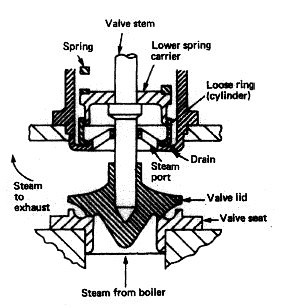
Ordinary Spring-loaded Safety Valve and Improved High-lift Safety Valve for a Marine Boiler
A marine boiler is used to heat feed water in order to produce steam. The
energy released by the burning fuel in the boiler furnace is stored (as
temperature and pressure) in the steam produced. Safety valves are fitted in pairs, usually on a single valve chest. Each valve
must be able to release all the steam the boiler can produce without the
pressure rising by more than 10% over a set period.



